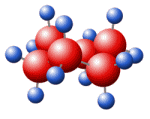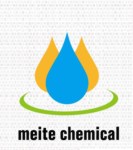|
|
|

|
Suppliers for
L-Cystine
|
Properties | | CAS |
56-89-3 | | Formula |
C6H12N2O4S2 | | EINECS |
200-296-3 |

|
|
36 Registered suppliers
| Description | White crystals or crystalline powder
| | Iron( Fe) | ≤ 20ppm
| | Heavy Mental(Pb) | ≤ 10ppm
| | Arsenic(As203) | ≤ 1ppm
| | Other Amino Acids | Conforms
| | Loss on drying | ≤ 0.20%
| | Residue on ignition(sulfated) | ≤ 0.10%
| | Assay | 98.5%-101.0% |
| Appearance | White crystal powder
| | Specific rotation | -215.0°to -225.0°
| | Transmittance | ≥ 98%
| | Loss on drying | ≤ 0.20%
| | Residue on ignition | ≤ 0.10%
| | Chloride | ≤ 0.04%
| | Sulfate(SO4) | ≤ 0.02%
| | Iron(Fe) | ≤ 10ppm
| | Arsenic | ≤ 1.5ppm
| | Heavy metal(Pb) | ≤ 10ppm
| | Organic Volatile Impurities | Meet the requirement
| | PH | 5.0-6.5
| | Chromatographic Purity | Meet the requirement
| | Assay | 98.5%-101.0%% |
| Appearance | White crystal powder
| | Specific rotation | -215.0°to -225.0°
| | Transmittance | ≥ 98%
| | Loss on drying | ≤ 0.20%
| | Residue on ignition | ≤ 0.10%
| | Chloride | ≤ 0.04%
| | Sulfate(SO4) | ≤ 0.02%
| | Iron(Fe) | ≤ 10ppm
| | Arsenic | ≤ 1.5ppm
| | Heavy metal(Pb) | ≤ 10ppm
| | Organic Volatile Impurities | Meet the requirement
| | PH | 5.0-6.5
| | Chromatographic Purity | Meet the requirement
| | Assay | 98.5%-101.0%% |
| Appearance | White crystal powder
| | Specific rotation | -215.0°to -225.0°
| | Transmittance | ≥ 98%
| | Loss on drying | ≤ 0.20%
| | Residue on ignition | ≤ 0.10%
| | Chloride | ≤ 0.04%
| | Sulfate(SO4) | ≤ 0.02%
| | Iron(Fe) | ≤ 10ppm
| | Arsenic | ≤ 1.5ppm
| | Heavy metal(Pb) | ≤ 10ppm
| | Organic Volatile Impurities | Meet the requirement
| | PH | 5.0-6.5
| | Chromatographic Purity | Meet the requirement
| | Assay | 98.5%-101.0%% |
Molecular Formula: C6H12N2O4S2 Molecular Weight: 240.3 Hazard Symbols: Xi,Xn UN Number: 2811 WGKGermany: 3 PackingGroup: III HS Code: 29309014
More details are to be found here
Molecular Formula: C6H12N2O4S2 Molecular Weight: 240.3 Hazard Symbols: Xi,Xn UN Number: 2811 WGKGermany: 3 PackingGroup: III HS Code: 29309014
More details are to be found here
Molecular Formula: C6H12N2O4S2 Molecular Weight: 240.3 Hazard Symbols: Xi,Xn UN Number: 2811 WGKGermany: 3 PackingGroup: III HS Code: 29309014
More details are to be found here
Molecular Formula: C6H12N2O4S2 Molecular Weight: 240.3 Hazard Symbols: Xi,Xn UN Number: 2811 WGKGermany: 3 PackingGroup: III HS Code: 29309014
More details are to be found here
Molecular Formula: C6H12N2O4S2 Molecular Weight: 240.3 Hazard Symbols: Xi,Xn UN Number: 2811 WGKGermany: 3 PackingGroup: III HS Code: 29309014
More details are to be found here
Molecular Formula: C6H12N2O4S2 Molecular Weight: 240.3 Hazard Symbols: Xi,Xn UN Number: 2811 WGKGermany: 3 PackingGroup: III HS Code: 29309014
More details are to be found here
Molecular Formula: C6H12N2O4S2 Molecular Weight: 240.3 Hazard Symbols: Xi,Xn UN Number: 2811 WGKGermany: 3 PackingGroup: III HS Code: 29309014
More details are to be found here
Molecular Formula: C6H12N2O4S2 Molecular Weight: 240.3 Hazard Symbols: Xi,Xn UN Number: 2811 WGKGermany: 3 PackingGroup: III HS Code: 29309014
More details are to be found here
EINECS :200-296-3
Molecular formula :C6H12N2O4S2
EINECS :200-296-3
Molecular formula :C6H12N2O4S2
EINECS :200-296-3
Molecular formula :C6H12N2O4S2
EINECS :200-296-3
Molecular formula :C6H12N2O4S2
EINECS :200-296-3
Molecular formula :C6H12N2O4S2
EINECS :200-296-3
Molecular formula :C6H12N2O4S2
EINECS :200-296-3
Molecular formula :C6H12N2O4S2
EINECS :200-296-3
Molecular formula :C6H12N2O4S2
More details are to be found here
More details are to be found here
More details are to be found here
Purity : 98% Smile code : N[C@@H](CSSC[C@@H](C(O)=O)N)C(O)=O MDL Number : MFCD00064228 MolFormula : C6H12N2O4S2 MolWeight : 240.3005 Available in stock : 79460.809
More details are to be found here
Purity : 98% Smile code : N[C@@H](CSSC[C@@H](C(O)=O)N)C(O)=O MDL Number : MFCD00064228 MolFormula : C6H12N2O4S2 MolWeight : 240.3005 Available in stock : 79460.809
More details are to be found here
Purity : 98% Smile code : N[C@@H](CSSC[C@@H](C(O)=O)N)C(O)=O MDL Number : MFCD00064228 MolFormula : C6H12N2O4S2 MolWeight : 240.3005 Available in stock : 79460.809
More details are to be found here
More details are to be found here
More details are to be found here
L-Cystine (L-Cystine) is an organic substance, white powder, soluble in dilute acid and alkali solutions, extremely difficult to dissolve in water, and insoluble in ethanol. There is a small amount in protein, and it is mostly contained in keratin such as hair and finger claws.
In medicine, it is used as a raw material for the production of antidote and expectorant.
In the food industry, it is used as a dairy additive and a fast-growing accelerator for bread. After heating with the sugar in the food, it can produce various special flavors and prevent the oxidation of oil.
It has a wide range of uses in the process; in the cosmetics industry, it is the raw material for the production of cold perm.
Use
1. For biochemical research. Prepare biological culture medium. It is used in biochemistry and nutrition research, and in medicine, it can promote the oxidation and reduction of body cells, increase white blood cells and prevent the development of pathogenic bacteria. Mainly used for various alopecia. It is also used for acute infectious diseases such as dysentery, typhoid fever, influenza, asthma, neuralgia, eczema and various toxic diseases, etc., and has the function of maintaining protein configuration. It is also used as a food flavoring agent.
2. Biochemical reagents for the preparation of biological culture media. It is also an important component of amino acid infusion and compound amino acid preparations.
3. As a feed nutrient fortifier, it is beneficial to animal development, increasing body weight and liver and kidney function, and improving the quality of fur.
4. It can be used as cosmetic additives to promote wound healing, prevent skin allergies and treat eczema.
L-Cystine (L-Cystine) is an organic substance, white powder, soluble in dilute acid and alkali solutions, extremely difficult to dissolve in water, and insoluble in ethanol. There is a small amount in protein, and it is mostly contained in keratin such as hair and finger claws.
In medicine, it is used as a raw material for the production of antidote and expectorant.
In the food industry, it is used as a dairy additive and a fast-growing accelerator for bread. After heating with the sugar in the food, it can produce various special flavors and prevent the oxidation of oil.
It has a wide range of uses in the process; in the cosmetics industry, it is the raw material for the production of cold perm.
Use
1. For biochemical research. Prepare biological culture medium. It is used in biochemistry and nutrition research, and in medicine, it can promote the oxidation and reduction of body cells, increase white blood cells and prevent the development of pathogenic bacteria. Mainly used for various alopecia. It is also used for acute infectious diseases such as dysentery, typhoid fever, influenza, asthma, neuralgia, eczema and various toxic diseases, etc., and has the function of maintaining protein configuration. It is also used as a food flavoring agent.
2. Biochemical reagents for the preparation of biological culture media. It is also an important component of amino acid infusion and compound amino acid preparations.
3. As a feed nutrient fortifier, it is beneficial to animal development, increasing body weight and liver and kidney function, and improving the quality of fur.
4. It can be used as cosmetic additives to promote wound healing, prevent skin allergies and treat eczema.
L-Cystine (L-Cystine) is an organic substance, white powder, soluble in dilute acid and alkali solutions, extremely difficult to dissolve in water, and insoluble in ethanol. There is a small amount in protein, and it is mostly contained in keratin such as hair and finger claws.
In medicine, it is used as a raw material for the production of antidote and expectorant.
In the food industry, it is used as a dairy additive and a fast-growing accelerator for bread. After heating with the sugar in the food, it can produce various special flavors and prevent the oxidation of oil.
It has a wide range of uses in the process; in the cosmetics industry, it is the raw material for the production of cold perm.
Use
1. For biochemical research. Prepare biological culture medium. It is used in biochemistry and nutrition research, and in medicine, it can promote the oxidation and reduction of body cells, increase white blood cells and prevent the development of pathogenic bacteria. Mainly used for various alopecia. It is also used for acute infectious diseases such as dysentery, typhoid fever, influenza, asthma, neuralgia, eczema and various toxic diseases, etc., and has the function of maintaining protein configuration. It is also used as a food flavoring agent.
2. Biochemical reagents for the preparation of biological culture media. It is also an important component of amino acid infusion and compound amino acid preparations.
3. As a feed nutrient fortifier, it is beneficial to animal development, increasing body weight and liver and kidney function, and improving the quality of fur.
4. It can be used as cosmetic additives to promote wound healing, prevent skin allergies and treat eczema.
L-Cystine (L-Cystine) is an organic substance, white powder, soluble in dilute acid and alkali solutions, extremely difficult to dissolve in water, and insoluble in ethanol. There is a small amount in protein, and it is mostly contained in keratin such as hair and finger claws.
In medicine, it is used as a raw material for the production of antidote and expectorant.
In the food industry, it is used as a dairy additive and a fast-growing accelerator for bread. After heating with the sugar in the food, it can produce various special flavors and prevent the oxidation of oil.
It has a wide range of uses in the process; in the cosmetics industry, it is the raw material for the production of cold perm.
Use
1. For biochemical research. Prepare biological culture medium. It is used in biochemistry and nutrition research, and in medicine, it can promote the oxidation and reduction of body cells, increase white blood cells and prevent the development of pathogenic bacteria. Mainly used for various alopecia. It is also used for acute infectious diseases such as dysentery, typhoid fever, influenza, asthma, neuralgia, eczema and various toxic diseases, etc., and has the function of maintaining protein configuration. It is also used as a food flavoring agent.
2. Biochemical reagents for the preparation of biological culture media. It is also an important component of amino acid infusion and compound amino acid preparations.
3. As a feed nutrient fortifier, it is beneficial to animal development, increasing body weight and liver and kidney function, and improving the quality of fur.
4. It can be used as cosmetic additives to promote wound healing, prevent skin allergies and treat eczema.
L-Cystine (L-Cystine) is an organic substance, white powder, soluble in dilute acid and alkali solutions, extremely difficult to dissolve in water, and insoluble in ethanol. There is a small amount in protein, and it is mostly contained in keratin such as hair and finger claws.
In medicine, it is used as a raw material for the production of antidote and expectorant.
In the food industry, it is used as a dairy additive and a fast-growing accelerator for bread. After heating with the sugar in the food, it can produce various special flavors and prevent the oxidation of oil.
It has a wide range of uses in the process; in the cosmetics industry, it is the raw material for the production of cold perm.
Use
1. For biochemical research. Prepare biological culture medium. It is used in biochemistry and nutrition research, and in medicine, it can promote the oxidation and reduction of body cells, increase white blood cells and prevent the development of pathogenic bacteria. Mainly used for various alopecia. It is also used for acute infectious diseases such as dysentery, typhoid fever, influenza, asthma, neuralgia, eczema and various toxic diseases, etc., and has the function of maintaining protein configuration. It is also used as a food flavoring agent.
2. Biochemical reagents for the preparation of biological culture media. It is also an important component of amino acid infusion and compound amino acid preparations.
3. As a feed nutrient fortifier, it is beneficial to animal development, increasing body weight and liver and kidney function, and improving the quality of fur.
4. It can be used as cosmetic additives to promote wound healing, prevent skin allergies and treat eczema.
L-Cystine (L-Cystine) is an organic substance, white powder, soluble in dilute acid and alkali solutions, extremely difficult to dissolve in water, and insoluble in ethanol. There is a small amount in protein, and it is mostly contained in keratin such as hair and finger claws.
In medicine, it is used as a raw material for the production of antidote and expectorant.
In the food industry, it is used as a dairy additive and a fast-growing accelerator for bread. After heating with the sugar in the food, it can produce various special flavors and prevent the oxidation of oil.
It has a wide range of uses in the process; in the cosmetics industry, it is the raw material for the production of cold perm.
Use
1. For biochemical research. Prepare biological culture medium. It is used in biochemistry and nutrition research, and in medicine, it can promote the oxidation and reduction of body cells, increase white blood cells and prevent the development of pathogenic bacteria. Mainly used for various alopecia. It is also used for acute infectious diseases such as dysentery, typhoid fever, influenza, asthma, neuralgia, eczema and various toxic diseases, etc., and has the function of maintaining protein configuration. It is also used as a food flavoring agent.
2. Biochemical reagents for the preparation of biological culture media. It is also an important component of amino acid infusion and compound amino acid preparations.
3. As a feed nutrient fortifier, it is beneficial to animal development, increasing body weight and liver and kidney function, and improving the quality of fur.
4. It can be used as cosmetic additives to promote wound healing, prevent skin allergies and treat eczema.
Detailed information on the suppliers of
L-Cystine |
Properties:
... more properties and specification on L-Cystine
|
|
Privileged suppliers
Last update 2024-04-26
|



 details
details details
details details
details








